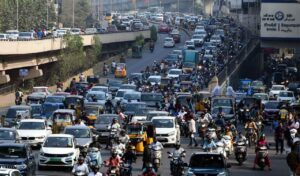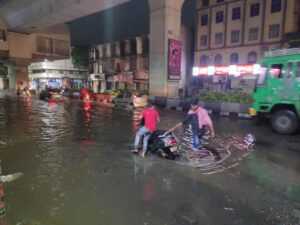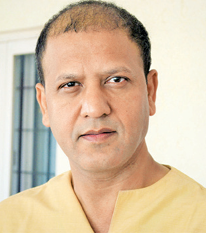Hyderabad: NDIA’S URBAN CENTRES are suffocating under the weight of misgovernance, systemic neglect, and poor design. Roads collapse, pavements vanish, traffic snarls stretch for hours, and garbage often remains uncollected. Public transport struggles to keep up. Yet rents keep rising, real estate prices soar, and migrants continue to arrive.
Urban India is not simply congested. It is broken.
Cities are meant to be platforms for prosperity. But most metropolises have become bottlenecks that drain productivity, widen inequality, and wear down their residents. For decades, India’s urbanisation has followed demographic drift, not deliberate planning. The result is cities that sprawl without services, expand without equity, and grow without grace. Rising urban climate threats like floods, heatwaves and resource strain are deepening the crisis.
Urban Decay Extracts a Heavy Toll
The root of the problem is not size but weak institutions. India spends only 0.75 per cent of its GDP on urban infrastructure and a fraction of China’s 5.7 per cent or Brazil’s 2.3 per cent. South Africa’s city governments, backed by clear constitutional mandates, manage 18 per cent of public spending. In contrast, their Indian counterparts control just three per cent to five per cent, leading to chronic urban failures. Bengaluru loses an estimated $6 billion each year to traffic congestion. Delhi’s polluted air claims around 30,000 lives annually. Mumbai’s trains carry three times their intended capacity. Chennai floods with every monsoon.
Inadequate urban infrastructure imposes heavy costs on both citizens and the economy. Health suffers from long commutes, pollution and stress, leading to medical bills and lost income. The economic cost is staggering. Poor urban infrastructure trims India’s GDP by three per cent to five per cent annually, according to the World Bank and NITI Aayog. A 2023 CAG report found 60 per cent of municipal budgets went unused due to delays and mismanagement, stalling productivity, slowing logistics, and squandering vast economic potential in India’s most dynamic cities.

Cities Without Citizens
India’s cities are structurally exclusionary. Although the urban poor power our cities as drivers, vendors, cleaners, and construction workers, they remain excluded from the very plans that define urban development – rendered invisible in a system built on their labour. Most live in informal settlements without tenure, services, or legal protection. Slum redevelopment often displaces rather than rehabilitates. The homeless are penalised rather than supported. The rental market barely functions.
India’s middle class, the engine of consumption and growth, cannot count on even basic services. Many households buy private water, pay high electricity bills, spend on expensive schooling, and cover their own security. These costs for basic services steadily erode already stretched household budgets. Manifesting as widespread alienation, apathy, and the daily indignity endured by urban residents. Gated enclaves offer comfort but fragment the city and dilute pressure for reform.
Cities also lack skilled professionals. A 2023 Crux study across 12 large metros highlights that India has only 2.4 urban planners per 100,000 residents, compared to 12 in South Africa and 38 in the UK. Over 70 per cent of urban local bodies lack qualified town planners, and leadership is often entrusted to generalist bureaucrats with short tenures and limited accountability. The Crux study likens India’s urban fragility to hospitals without doctors. No complex system can function effectively without domain expertise.

False Starts & Stalled Promises
India has launched urban reform schemes, but few deliver systemic change. The Crux study laments that despite a Rs1 lakh crore budget; the Smart Cities Mission launched in 2015 has fallen short. By 2023, only 25 per cent of the funds had been utilised, leaving core infrastructure goals largely unmet. Many cities continue to prioritise
cosmetic upgrades like streetlights and command centres over basic needs such as sewage and housing. This reflects a deeper malaise; a chronic mismatch between what cities are expected to deliver and what they are actually empowered to do.
There are glimmers of hope. Indore’s sanitation campaign, Surat’s flood resilience, and Bhubaneswar’s data-driven planning show what’s possible with local leadership and citizen engagement. Globally, cities use cable cars for inclusive transit, restore public spaces like Seoul’s stream, and deliver affordable housing, as Singapore does, through strong planning and land control, transforming urban living.
Fix the System, Not the Symptoms
India lacks not policy ideas but institutional commitment. Reform must begin with decentralisation. Urban local bodies need control over planning, revenue, and personnel. The 74th Constitutional Amendment, meant to empower urban local bodies, has been hamstrung by state governments’ failure to enact enabling laws for fiscal and administrative autonomy. This leaves cities dependent on state or central grants, delaying critical projects.
Cities need trained professionals like urban planners, transport economists, climate scientists, and public health engineers. Institutions like the National Institute of Urban Affairs should become talent pipelines, not just policy think tanks. India should create Urban Innovation Hubs in 20 second-tier cities, backed by an annual fund of Rs 10,000 crore, to test housing, mobility, and sustainability solutions tailored to local needs.

Affordable housing must be treated as critical infrastructure. Reforming rental laws, unlocking idle land, and mandating inclusionary zoning can help. Public transport should be a universal public good, not a last resort. Bus rapid transit, metro integration, and walkable neighbourhoods should anchor urban design. Local leaders must prioritise long-term reform over short-term fixes. Citizens must engage in governance, not just complaint. Corporates must invest in public environments as a strategic necessity, not philanthropy. State governments must
devolve power.
A New Urban Future
Cities are more than economic engines; they are civic spaces and shared ecosystems. Fixing India’s cities requires a new civic compact, not just flyovers or smart dashboards. Without meaningful reform, India risks squandering its demographic dividend and turning it into a demographic burden. Inequality will widen, economic ambition will slow, and political unrest will grow.
The future of the Indian economy depends on renewing its cities and repairing the urban engine.

(Dr Vikas Singh)
The author is an economist
and columnist
“Courtesy: BW Businessworld,
06 September 2025”


